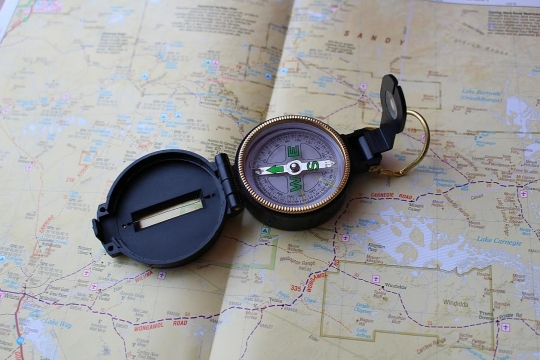Contributed by Cory Wilkerson, Project Manager, National Coalition for Core Arts Standards
Ms. Cory Wilkerson is the Project Manager for the National Coalition for Core Arts Standards and serves on the Media Arts Committee. Ms. Wilkerson has taught Theatre Arts and film K-12 as a teaching artist and classroom teachers; her current work has been in arts standards and assessment. She also serves as the Project Manager for the State Education Agency Directors of Arts Education and facilitated the recent pilots of Model Cornerstone Assessments for the new national Media Arts Standards.
The buzz was palpable as educators at the Young Audiences Growing Up with the Arts conference in Miami Beach, Florida gathered in a conference room to hear about and experience the first nationally benchmarked student work in Media Arts. Educators from across the nation practicing Media Arts in many different settings brought their knowledge, experiences and questions in an enthusiastic dive into student work and to wrestle with what it means to be proficient in this art form in 2nd, 5th and 8th grades. However, I promised to talk to you about road maps and test drives, and I will, however that takes just a little bit of context.
In June of 2014, history was quietly made when new voluntary national arts standards were published, including standards for Media Arts. According to the
National Coalition for Core Arts Standards FAQ “The addition of media arts standards reflects a broadened definition of arts-making that includes contemporary forms such as animation, film, gaming or interactive- and computer-based art-making.” Media Arts practitioners rejoiced! For the first time, nationally, Media Arts was recognized as a stand-alone art form meriting its own standards. The Media Arts standards produced represent the best thinking of a team of brilliant Media Arts educators and practitioners led by LA Unified School District teacher Dain Olsen over two years of planning, editing, reviewing and rewriting.
But why the excitement over standards, and what good is a standard anyway? Dictionary definitions will tell you that it is “a level of attainment, a measure, norm or model; or a document that provides guidelines for consistency”. As a Media Arts educator I would add one more nuance to these definitions which helps get to the root of all of the excitement. To me, a set of standards creates a road map that will help me to plan a sequence of learning activities and a progression of skill building for my students. It is a compass for where I want to travel as well, since I use standards as the learning targets for my students. Using the standards as a learning target or goal, allows me to measure their progress and articulate in a clear, understandable way, what my students know and can do. I can look at a first grader’s video storyboard and tell them more than just “great job”! Now I can say “Your storyboard sketches clearly share your ideas for your video- great job!” much more useful feedback and directly quoting Media Arts standard MA: Cr1.1.1 “Express and share ideas for media artworks through sketching and modeling”. My road map paid off not only in guiding me to create instruction, but also in showing them where they were on the map. And using the standards as my compass, I know where we are headed, because the standards tell me that in third grade this student should be able to “Develop multiple ideas for media artworks using a variety of tools/methods and or materials”. So I’ll be planning ahead to introduce other methods of planning in addition to the simple 6 cell storyboard we used in first grade.

Photo Credit: Mary Kendall
Having exhausted the compass metaphor, it is time to move on to the second premise in the title of this piece- test drives. To paraphrase something I’ve heard often “now that the standards are published, the work is just beginning”. No one buys a car without a test drive; well, a newly minted set of standards needs a test drive as well. So the work of piloting the standards in classrooms across the nation was the next step. In January of 2015, after a nationwide search for media arts educators, the Media Arts Committee of the National Coalition for Core Arts Standards began a pilot of the new standards using a tool called a Model Cornerstone Assessment, and I was thrilled to help facilitate for the piloting teams. Model Cornerstone Assessments in the Media Arts are models of possible units of instruction aligned with the national Media Arts standards which include suggested instruction pathways, ideas for media arts tasks and sample rubrics. Twelve classrooms from around the nation were chosen to test drive a video based media arts task at grades 2, 5 and 8, both to test the task and to produce student work samples aligned to the new Media Arts standards which would help teachers read the road map and use the compass. Over 340 samples of student work were submitted. In a rigorous adjudication process, 5 additional Media Arts educators selected portfolios of student work which scored repeatedly across the judges as “at or above proficient”. These “benchmarked” examples of student work are now housed on the national core arts standards website at www.nationalartsstandards.org.
One such example is this Media Arts work sample created by an 8th grade student in response to a unit of instruction which asked students to research a media artist of their choice and and then create a video that both described and illustrated the artist's work and style. This particular student work shows clear proficiency as measured by the standards and the MCA rubric. It speaks for itself in terms of the way in which the student crafted content, production values and script to work together to illustrate the genius of Charlie Chaplin's artistry.
It was these examples of student work I referred to in my opening paragraph which caused such a stir at the Young Audiences conference. In that conference room, we took both the Model Cornerstone Assessments and the standards to the next level as we examined sample Media Arts works. The most interesting conversations that day emerged as we examined work that had scored at the “proficient” level side by side with work that was “approaching proficient”. The growth and learning existed at the point at which we tried to determine what differentiated the two. What moves a student’s work into a clear example of proficiency in Media Arts? What marks the dividing line between “you got it” and “you’re almost there”? How does instruction connect with student proficiency? How does a rubric impact the scoring of student work? The discoveries made that day energized us all, as we carried on that vital national conversation about artistic literacy in the infancy of Media Arts. I invite you to join this conversation. View the student work at
www.nationalartsstandards.org, download the Model Cornerstone Assessment and rubric and try your hand at scoring for yourselves. See if you can determine why the adjudicators reached the conclusions they did. Or better still, use the Model Cornerstone Assessment template to create your own Media Arts task aligned to the new standards. Try out the compass with your own road map, and share your findings with others.
Together we can, and must illuminate the path, because our students are creating works in the Media Arts every day as a part of the landscapes of their lives. They need our best thinking and our support. I had a 4th grade film student tell me just the other day “I love film and video, because it is my language. Thank you, you are the first person I’ve found who speaks my language.” I owe that to the new Media Arts standards which helped me plan the sequence of instruction he had just experienced, and to the learning I experienced as a presenter at the YA conference in that conference room where we shared our thoughts about student work. Thank you NCCAS and Young Audiences educators, you speak my language!




